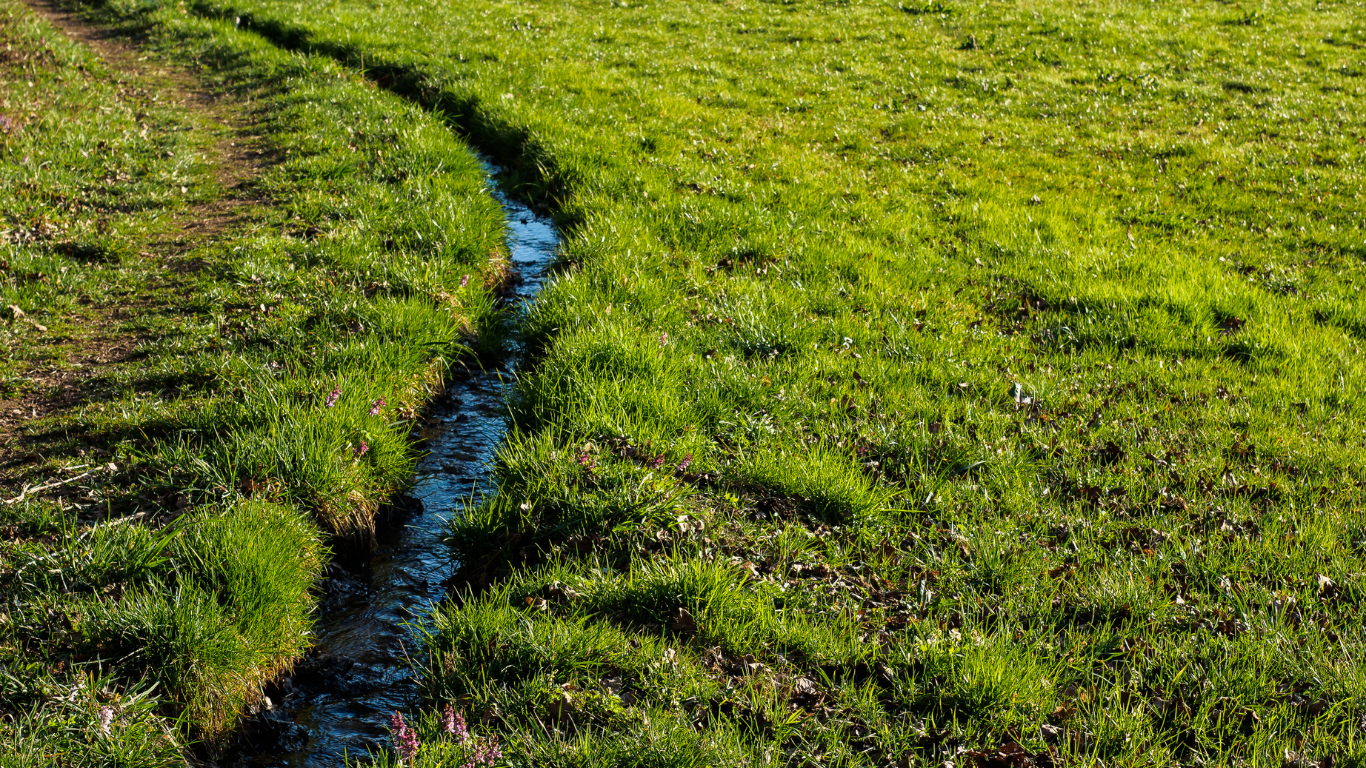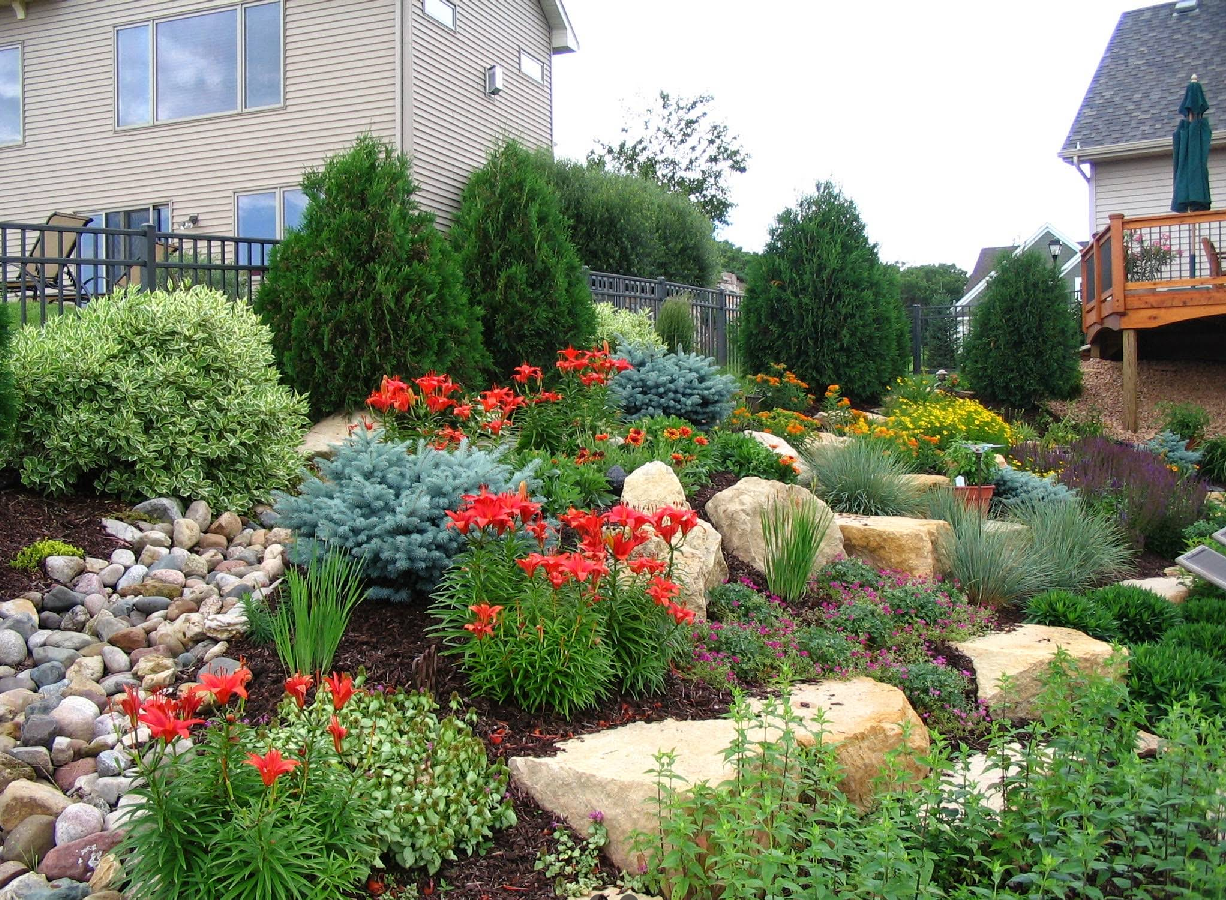Fixing Drainage Problems in Your Yard: Smart Grading & Drainage Solutions
Learn How to Fix Yard Drainage Issues

If your yard stays soggy after rain or you notice water pooling near your home, you are not alone. Drainage problems are one of the most common issues Minnesota homeowners face. They can lead to soil erosion, foundation damage, dead grass, and even basement flooding if ignored.
Fortunately, most drainage issues can be solved with thoughtful design and proper grading. At
Landscape Gal, we believe great landscapes begin with function. Our solution-based approach ensures every design not only looks beautiful but also performs well year-round, handling Minnesota’s heavy rains and snowmelt efficiently.
This guide explains how to identify the root cause of drainage issues and the smart landscape solutions that fix them for good.
Understanding the Root Causes of Yard Drainage Problems
Before solving a drainage problem, it is important to know what causes it. In Northfield and across southern Minnesota, common culprits include:
- Improper grading – The yard does not slope away from the house, causing water to collect near foundations.
- Compacted soil – Heavy clay soils and construction compaction limit water absorption.
- Blocked or inadequate gutters and downspouts – Water from the roof may be dumped directly into low spots.
- Hardscape runoff – Patios, driveways, and walkways can direct water to unwanted areas.
- Natural low spots – Depressions in the yard that hold water without proper drainage outlets.
A professional designer evaluates all these factors before recommending solutions.
Step 1 – Evaluate the Grade and Flow of Water
The first step in any drainage correction is analyzing how water moves through your property. A proper slope should drop about one inch for every ten feet away from the foundation.
If the slope is reversed or uneven, water can pool against your home. Using grading equipment and laser levels, professionals like
Landscape Gal reshape the yard to guide water naturally toward lower, safe drainage zones.
Correct grading not only protects your foundation but also improves lawn health by preventing oversaturation.
Step 2 – Install French Drains or Drain Tile
For properties where grading alone is not enough, a
French drain system is a reliable solution. It consists of a perforated pipe buried in a gravel trench that collects excess water and redirects it to a proper outlet.
French drains are ideal for:
- Areas with consistent standing water
- Low points in the yard
- Bases of retaining walls
- Areas near patios or walkways
By capturing groundwater before it becomes surface runoff, these systems prevent erosion and waterlogging.
Step 3 – Use Retaining Walls to Manage Slopes
If your property includes steep grades or uneven elevation, retaining walls can provide both structure and drainage management.
Landscape Gal specializes in
retaining walls built with natural stone, boulders, or manufactured block. Behind each wall, a layer of drainage gravel and perforated pipe is installed to relieve hydrostatic pressure. This ensures stability and directs water away from your landscape’s foundation.
Properly engineered retaining walls not only prevent soil erosion but also create beautiful terraced planting areas.
Step 4 – Direct Water with Swales or Dry Creek Beds
A
swale is a shallow, grassy channel designed to carry stormwater away gently. It looks like a natural dip in the landscape but plays a vital functional role.
Swales can be enhanced aesthetically by lining them with decorative stone or river rock, forming what is known as a
dry creek bed. These features:
- Slow and direct runoff
- Filter water naturally through soil and vegetation
- Add beauty while managing flow
They are an ideal solution for large yards or areas with moderate drainage challenges.
The body content of your post goes here. To edit this text, click on it and delete this default text and start typing your own or paste your own from a different source.
Step 5 – Integrate Rain Gardens for Sustainable Drainage
For environmentally friendly homeowners, a
rain garden is one of the best modern drainage solutions. It uses native plants and soil layers to capture and filter rainwater naturally.
Rain gardens are strategically placed in low areas or near downspouts to intercept runoff. The plants absorb water quickly, while deep root systems help aerate soil and prevent compaction.
Landscape Gal designs rain gardens tailored to Minnesota’s ecosystem, featuring hardy species that thrive in both wet and dry conditions. They add color and habitat value while improving drainage.
Step 6 – Address Hardscape and Runoff Issues
Hard surfaces like patios, driveways, and walkways often redirect rainwater in unintended ways. During design or renovation, it is important to plan how these surfaces drain.
Some smart fixes include:
- Permeable pavers that allow water to soak through instead of running off
- Channel drains along paved areas to collect surface water
- Proper pitch away from structures to prevent pooling
When designing new outdoor living areas, Landscape Gal always includes a detailed water flow plan to ensure your investment remains durable and low maintenance.
Step 7 – Maintain Gutters, Downspouts, and Sump Outlets
Even the best drainage systems fail if roof runoff is not managed properly. Keep gutters clean and ensure downspouts discharge at least six feet away from your home’s foundation.
For areas with sump pumps, verify that outlets are directed to safe drainage zones or tie them into subsurface drain tile systems.
Regular maintenance prevents backflow and over-saturation near the home.
Common Signs You Need Professional Drainage Help
Not sure if your drainage issue requires professional intervention? Watch for these warning signs:
- Persistent puddles or soggy spots in the yard
- Soil erosion or washed-out mulch beds
- Foundation cracks or water stains on basement walls
- Grass that yellows or dies in patches
- Mosquito buildup from standing water
These issues indicate deeper grading or soil problems that require expert correction.
How Landscape Gal Solves Drainage and Grading Issues
At
Landscape Gal, drainage is part of every design, not an afterthought. Our approach includes:
- Site Assessment: Measuring slopes, identifying flow patterns, and locating problem zones.
- Design Strategy: Combining functional drainage systems with beautiful landscape elements.
- Material Selection: Using natural stone, quality drain tile, and sustainable plantings.
- Installation: Professionally graded, compacted, and tested for performance.
- Follow-Up: Ensuring the system continues to perform through seasonal weather.
We design for longevity and beauty, ensuring your landscape looks good and works well for years.
FAQs About Yard Drainage and Grading in Minnesota
Q1: How can I tell if my yard needs regrading?
If water pools near your home or drains toward the foundation, your slope likely needs correction. A professional can measure grade angles and recommend adjustments.
Q2: Are French drains expensive to install?
Costs vary depending on yard size and soil type. While more involved than surface fixes, French drains are long-term investments that prevent costly structural damage.
Q3: Can landscaping alone fix my drainage problem?
In many cases, yes. Proper grading, plant selection, and the addition of swales or rain gardens can significantly improve drainage without major excavation.
Q4: What plants work best for wet areas in Minnesota?
Native species such as Joe Pye weed, swamp milkweed, blue flag iris, and sedges thrive in moist soil and help absorb excess water.
Q5: When is the best time to install drainage systems?
Spring and fall are ideal since soil is workable and vegetation can establish quickly before freeze-thaw cycles return.
Protect Your Home and Landscape with Professional Drainage Design
Poor drainage can silently undermine your home and yard over time. The good news is that most problems are preventable with smart design and expert grading.
If you notice water pooling or suspect poor drainage, contact
Landscape Gal for a professional consultation. We provide custom drainage and grading solutions throughout
Northfield, Rice County, and the southern Twin Cities metro area.
Call (612) 366-3477 or visit https://www.landscapegal.com to schedule an on-site evaluation.


